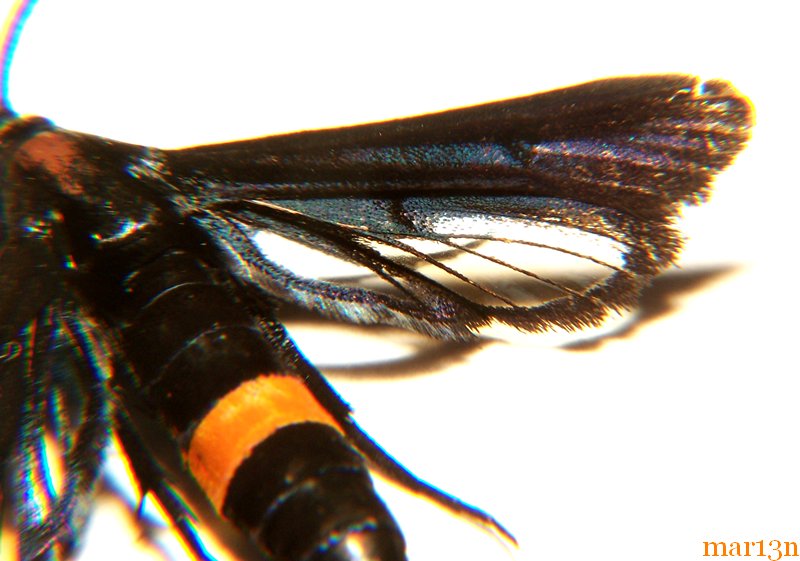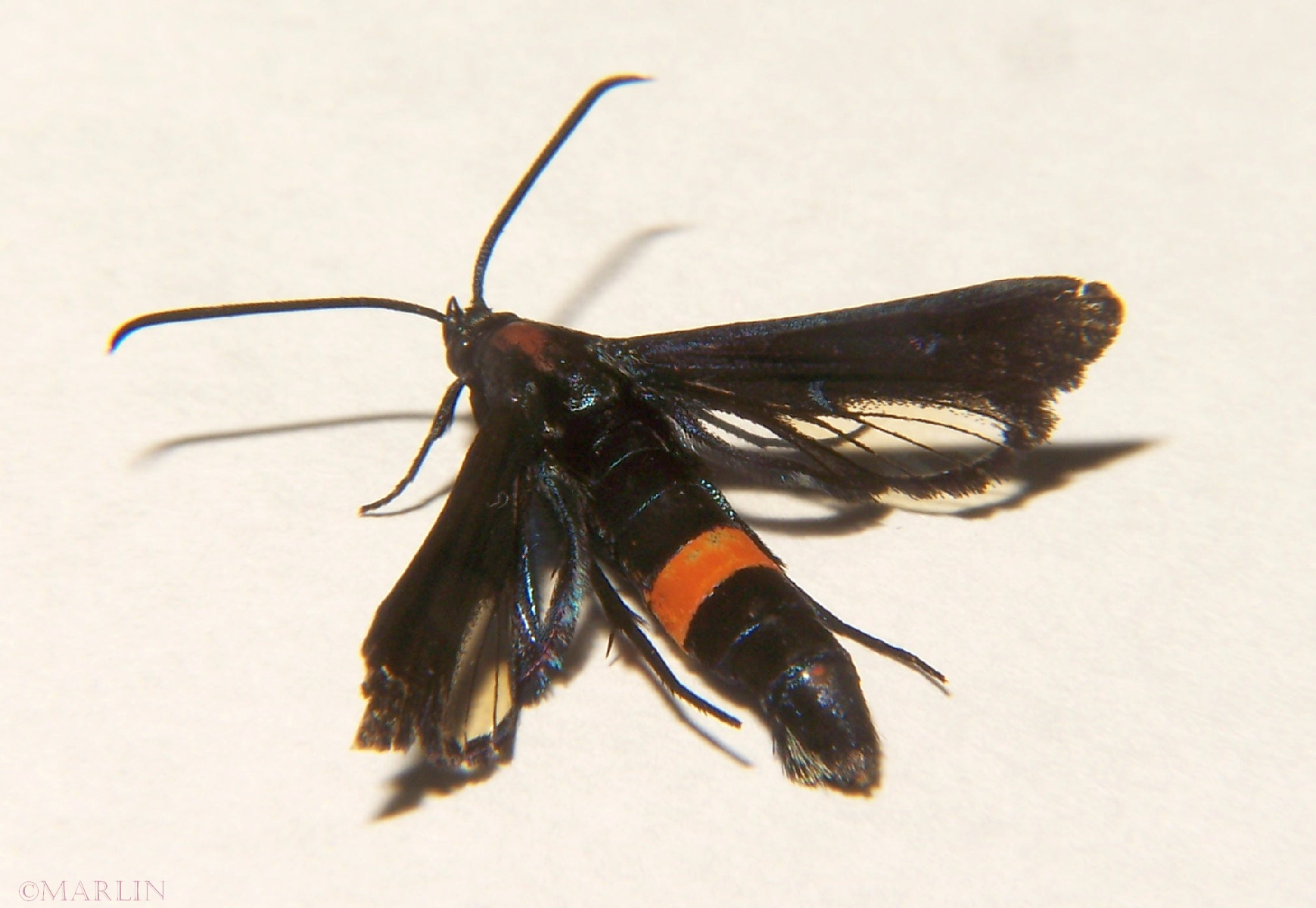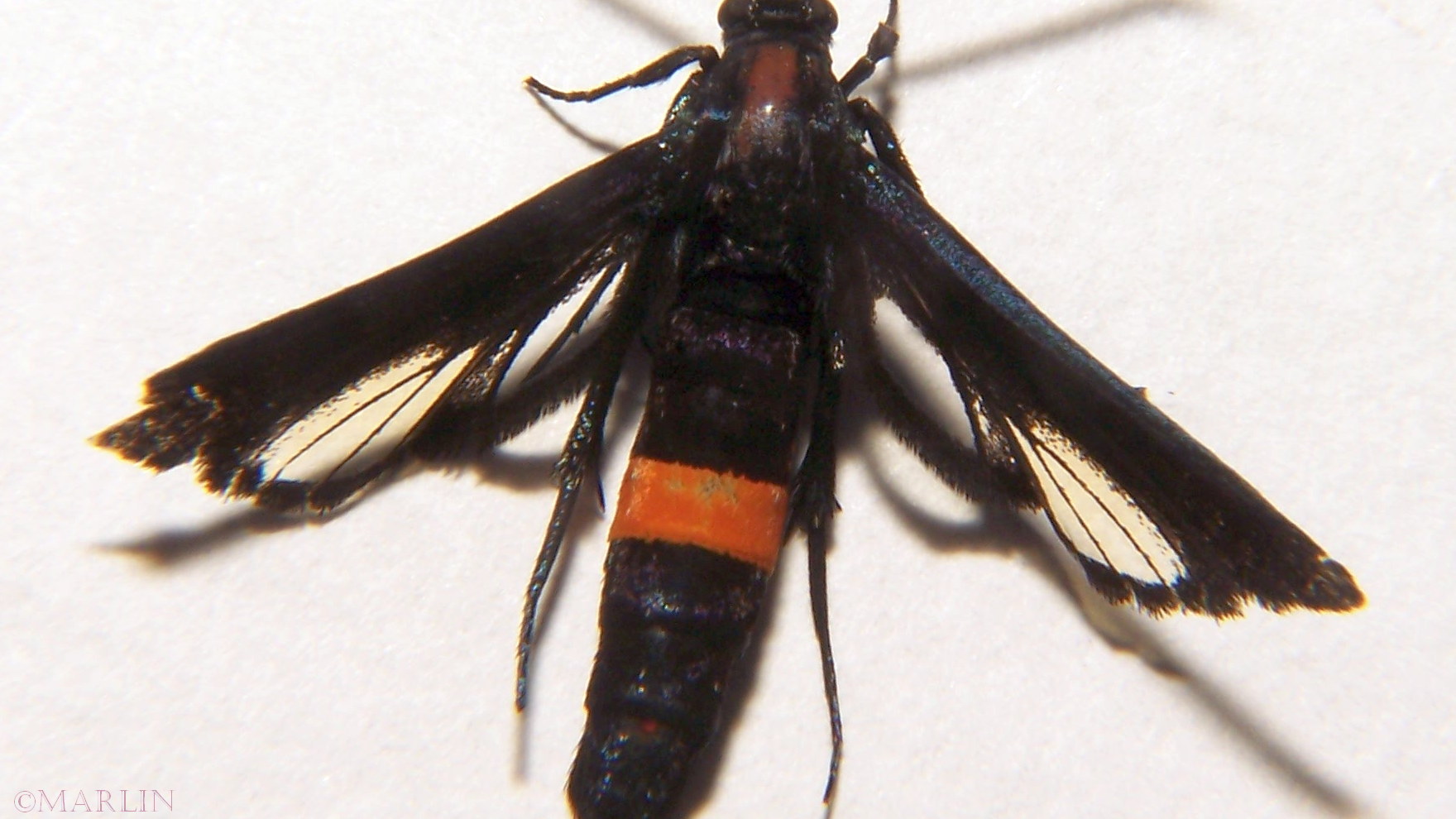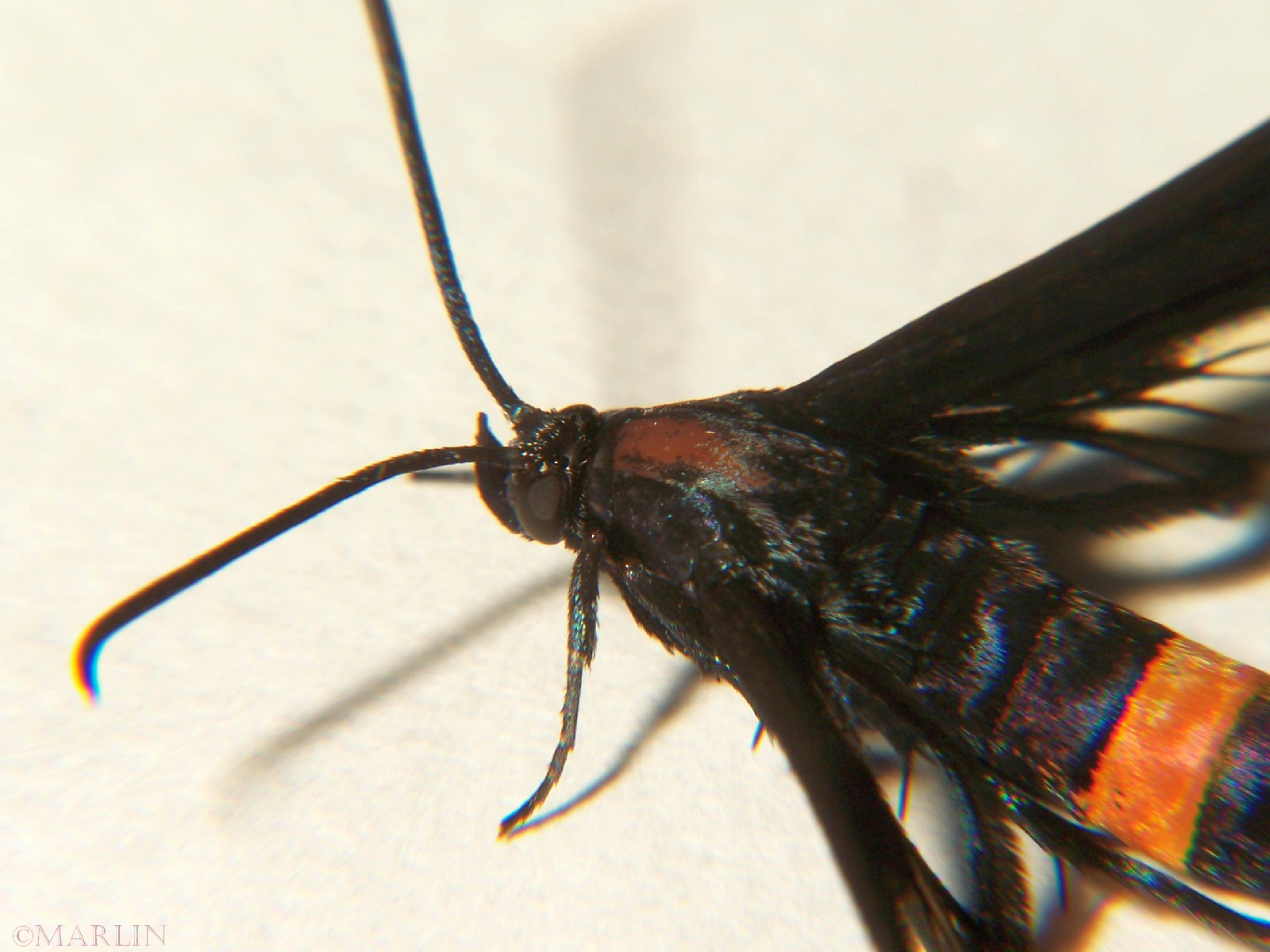Peachtree Borer Moth – Synanthedon exitiosa
Hodges#2583
Live adult female moth photographed at Bartlett, Illinois, USA. Wingspan=15 mm
The Sesiidae are commonly called “clearwing moths” because of their wings’ lack of the usual Lepidopteran scales. The bodies are generally striped with yellow or orange and they have simple antennae. It is thought these moths are Batesian mimics or wasps and hornets. The adult moths have long, narrow front wings and shorter, wider hind wings. The hindwings, and in some species the front wings are transparent. These moths fly during the day and at twilight (crepuscular).
Adult clearwings are known to enhance their mimicry of wasps by intermittently running while rapidly vibrating their wings. [1] The peachtree borer is unusual in the family, as it pupates in the soil instead of under tree bark as most other sesiids.
The larvae of the Sesiidae are typically wood-borers, or burrow in plant roots. Many species are serious pests of fruit-tree or timber cultivation, or crop plants (e.g. Melittia spp. on squash) (Edwards et al., 1999). The Sesiidae share their common name with moths in the Hemaris genus of the family Sphingidae; the hummingbird clearwing and snowberry clearwings are members of Hemaris. They are generally much larger and furrier than the Sesiidae and are much more able mimics of bumblebees. [2]

References
- Ray R. Hicks, Ecology and Management of Central Hardwood Forests (Wiley, 1998).
- Russell M. Burns, SILVICS OF NORTH AMERICA VOL. 2, HARDWOODS (Forest Service, USDA, 1990).
- Colin Tudge, The Tree: A Natural History of What Trees Are, How They Live, and Why They Matter. (Three Rivers Press, 2007).
Moths Index | Moths | Butterflies Main | Butterflies Index | Skippers
Tree Encyclopedia / North American Insects & Spiders is dedicated to providing family-friendly educational
resources for our friends around the world through large images and macro photographs of flora and fauna.




